Recent Articles
Popular Makes
Body Types
2021 Polestar 2 Road Test and Review
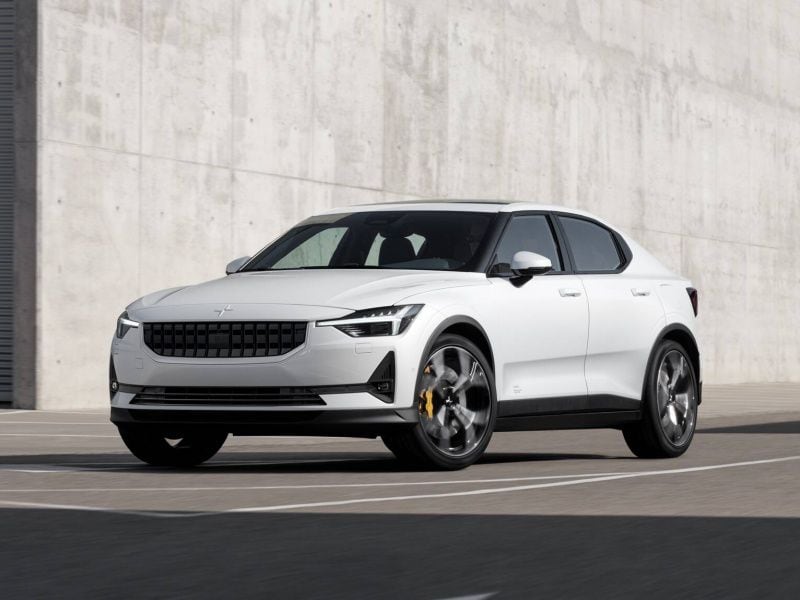
2021 Polestar 2 ・ Photo by Polestar
Tesla owns the electric vehicle market. The company is now worth more than GM and Ford combined, and its EVs dominate the growing market for emission-free cars and SUVs. But its competition keeps coming, and the latest to take on Tesla is the 2021 Polestar 2.
Polestar is a new brand from Volvo. It was launched in 2017 and its first model, the Polestar 1, hit the street this year. The Polestar 1 is a limited-production plug-in hybrid coupe with a carbon fiber body and a $150,000 price tag. Just 450 will be brought to the United States over the next three years. It’ll also be the last Polestar to have an internal combustion engine. Every other model will be powered exclusively by electricity. The Polestar 2 is the brand’s first EV, and the small hatchback sedan — which features standard all-wheel drive and a new type of infotainment system from Google — is gunning for the Tesla Model 3, the country’s best-selling EV. Polestar says it will deliver the first 2,000 by the end of the year.
Base Price Around $61,000
Like Volvo, Polestar is owned by a Chinese company. All Polestars are and will be built in China, and the brand is opening small showrooms in cities all over the United States where you can check out the cars and take a test drive. Today there are three — in Los Angeles, San Francisco, and New York City — but six more are planned in early 2021, and each will deliver a car up to 150 miles from the showroom.
Leasing is available, but the showrooms will only keep a few cars on the premises, so same-day delivery isn’t offered. Depending on your chosen configuration, Polestar says buyers will have to wait one to three weeks between placing your order and taking delivery of your new EV. Polestar offers just one version of the Polestar 2 and it has a base price of $61,200, including a $1,300 destination fee.

Photo by Polestar
Just a Few Options
Polestar offers just a handful of options on the Polestar 2. Six colors are available, but only black is free. The other five cost an extra $1,200. Nappa leather costs $4,000. Polestar brags that the standard cloth upholstery is vegan. The $5,000 Performance Pack adds adjustable Öhlins shocks, gold Brembo front brake calipers, 20-inch wheels, performance tires, stiffer springs and stabilizer bars, a high-gloss black roof, and gold seatbelts.
Polestar also offers another wheel-and-tire package. The standard setup is a set of 19-inch wheels wrapped in 245/45R19 tires. For $1,200, you can upgrade to 20-inch aluminum wheels and 245/40R20 all-season tires. Everything else you can think of is standard, including automatic emergency braking and a list of other safety systems and driver aids as long as your arm, all-wheel drive, LED lights, power seats, a glass roof panel, heated front and rear seats, and one of the world’s most advanced infotainment systems.
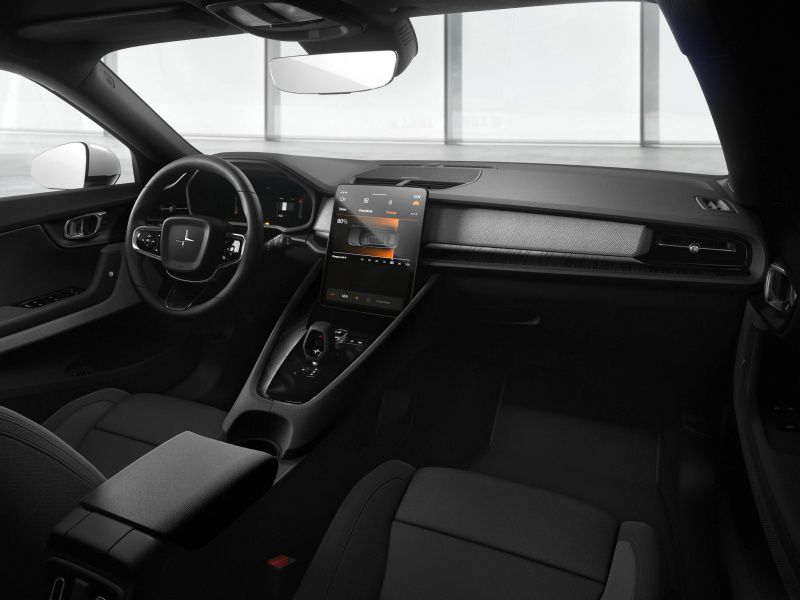
Photo by Polestar
Respectable Range and Charge Times
The sedan’s EPA range ratings aren’t final yet, but Polestar says its will be about 250 miles with the standard tires and about 240 miles with the 20-inchers. That’s about the same rating as the base Model 3 Standard Range Plus. The Model 3 Long Range has a range of 322 miles, and the range of the Performance is estimated to be 299 miles.
Polestar 2 comes equipped with an 11-kW onboard charger and can be charged at home with a standard 120 or 240-volt outlet. For much faster charging, it can accept public chargers with up to 150 kW of DC power. Estimated charging times for its 78-kWh lithium-ion battery are 8 hours on an 11 kW wall box charger, 22 hours on a three-prong household-style 120V outlet, and about an hour at 150 kW.
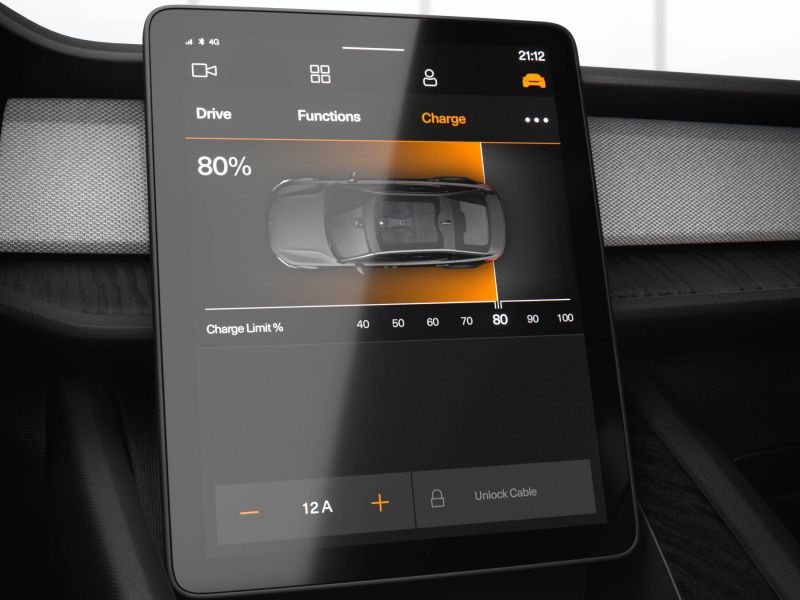
Photo by Polestar
Seriously Quick
Packing two electric motors that put out a combined 408 horsepower and 487 lb-ft of torque, the 2021 Polestar 2 isn’t short on performance. Throttle response is immediate and this small sedan rockets off the line, pinning you to the seat with the violence of a roller coaster. At any speed, full throttle is nothing short of a thrill ride, and the sedan’s explosive acceleration is addictive. Polestar says 0-60 mph takes 4.5 seconds, 0-100 mph takes just 10.8 seconds, and the quarter-mile is gone in 12.8 seconds.
That’s about the same acceleration as you get in a Model 3 Long Range, while the thrust of the Model 3 Performance is in another world, with a 0-60 time of just 3.2 seconds. The Polestar’s powertrain is also exceedingly smooth and refined, and like all EVs it’s silent. The lack of engine noise feels weird at first, but you soon begin to enjoy the whir from its two electric motors.
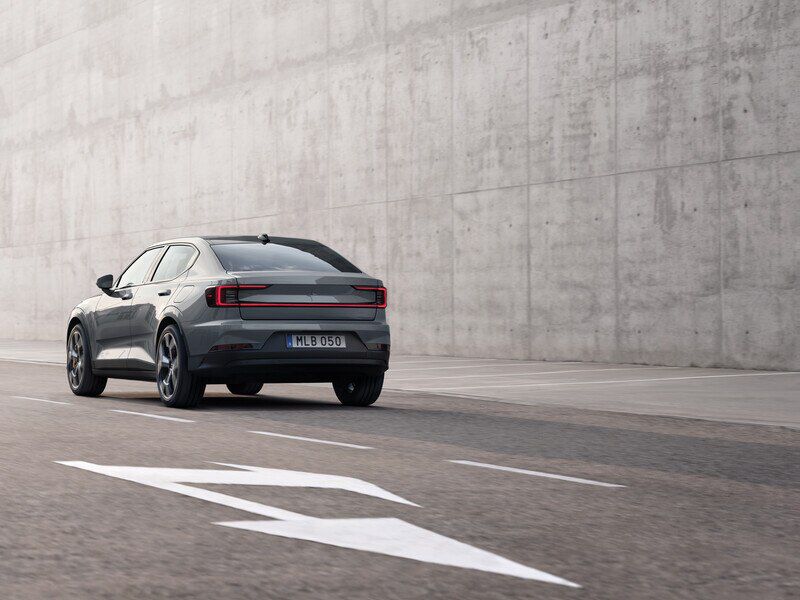
Photo by Polestar
Smooth Ride, Sports Sedan Handling
EVs can be heavy because of the added weight of their battery packs, and the Polestar 2 is no lightweight at 4,680 lbs. The good news is that Polestar mounts its battery pack low in the sedan’s chassis, so it’s very well balanced and has a very low center of gravity. Stability is impressive and it handles like a true sports sedan.
Its all-wheel drive and large sticky 20-inch tires help, of course, but the Polestar 2 doesn’t feel big and bulky from behind the wheel. It’s fun to drive, but also quiet, relaxed, and luxurious. Some buyers may find the suspension setting of the optional Performance Pack to be firm, but the ride quality isn’t uncomfortable. Its light and precise steering is adjustable, as is the intensity of its regenerative braking system. Crank it up and it produces strong deceleration as soon as you lift off the accelerator, which takes a little getting used to. Our only dynamic complaint is an inconsistent brake pedal feel; otherwise, stops are short and drama-free.
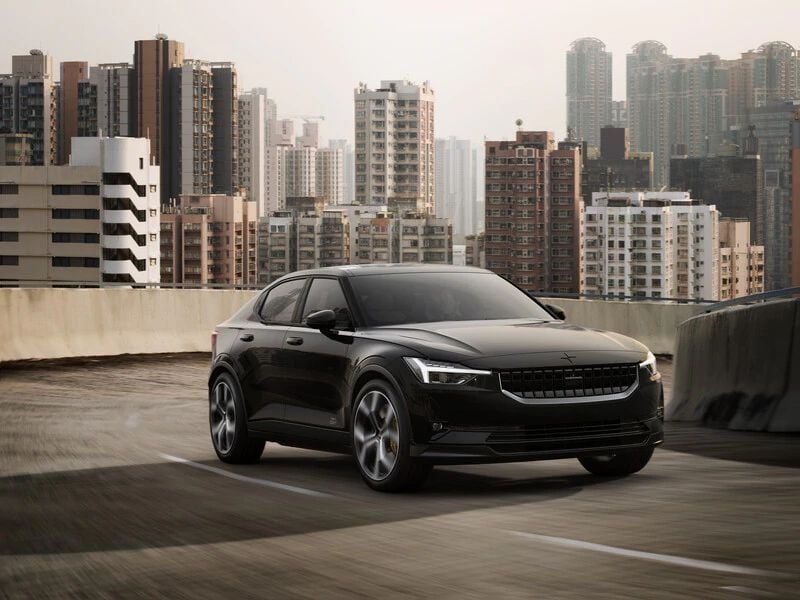
Photo by Polestar
Sharp Exterior
As attractive as the Polestar 2 is, with it tight proportions and hunkered down stance, it undoubtedly looks like a Volvo. That’s isn’t a bad thing, but Polestar says its future models will be more daring. We’re told the Polestar 3, the brand’s first SUV, is coming soon and “will look less like a Volvo”.
The only Polestar 2 badges are clumsy decals on the front doors. “They peel right off,” says a company official. It’s a hatchback, like the Tesla Model S, while the smaller Model 3 has a traditional trunk. Polestar says there’s 14.2 cubic feet of cargo space back there and 38.7 cubic feet with its 60/40 split rear seat folded flat. The Polestar also has a small front trunk (frunk), which can swallow a briefcase, and there’s quite a bit of hidden storage under its trunk floor.
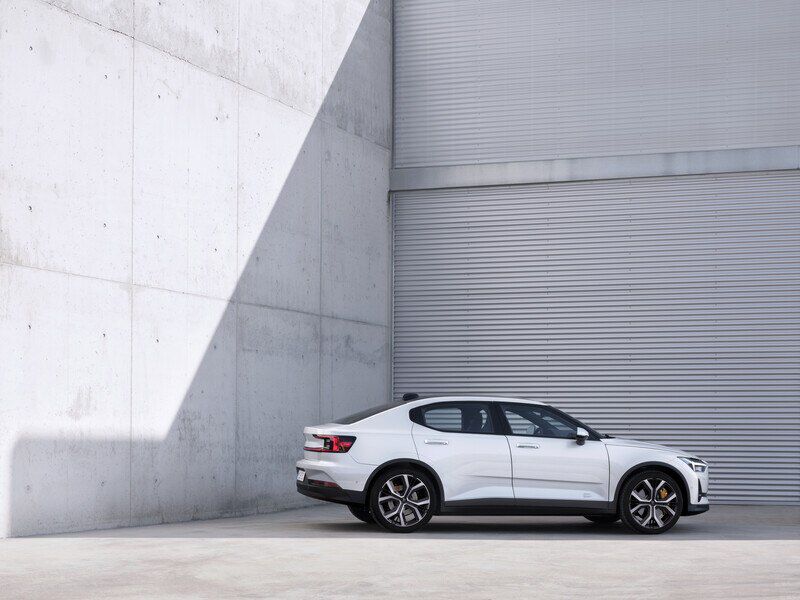
Photo by Polestar
Comfortable Interior
Like Tesla, Polestar has eliminated the need for a start button, you just jump in, buckle up and take off. You sit low in the Polestar 2 in a very sporty driving position, but forward visibility is isn’t an issue. Fit, finish, and the quality of the materials are excellent, and its seats are comfortable. Interior storage is sufficient, but there’s only one front-seat cupholder and rear visibility is compromised by large C-pillars and rear headrests. Though fixed in place, its big panoramic sunroof doesn’t have a shade, so lather on the sunblock.
The interior design is also similar to many Volvo models, but it’s simple, attractive, and agreeably functional. A huge vertically mounted 11-inch touchscreen is used to control all of the sedan’s features, including its climate control system, navigation, audio system, and seat heaters. Its digital gauge cluster is also minimalistic but informative and configurable to your liking. Rear seat space is big enough but not huge. It seats five but not comfortably.
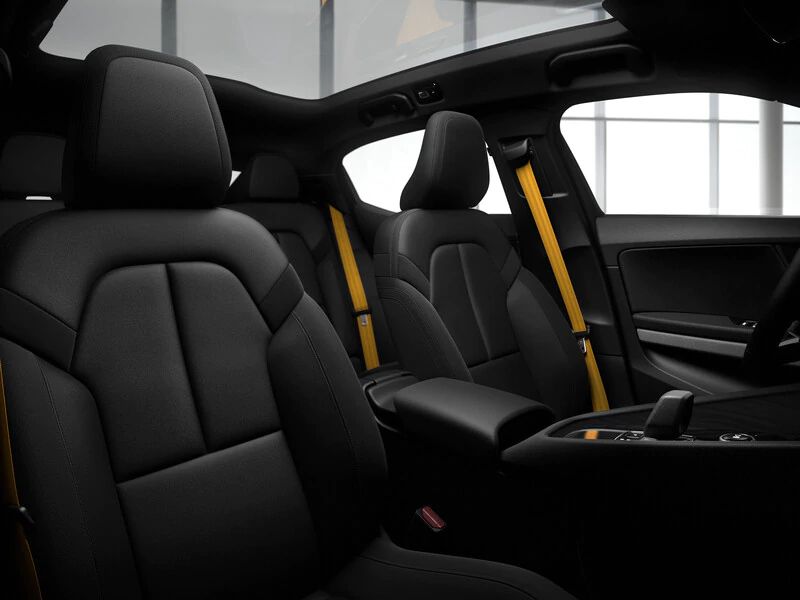
Photo by Polestar
Infotainment by Google
You’re going to be hearing a lot about Polestar’s new infotainment system, which has been developed in partnership with Google. Called Android Automotive, the embedded operating system features Google Assistant, Google Maps, and apps available in the Google Play Store. Polestar will be the first to use its platform as well as offer its applications and services, but soon the system will be used by other automakers, including General Motors.
The system is well-organized and quick to respond to your touch, and Google Assistant may be the best voice command system we’ve tried. Graphics are clean and colorful. There are four large tiles on the home screen, one each for Maps, Phone, Audio, and the car’s battery-charge consumption. Each scrolls within itself to reveal clusters of apps for each genre, or you can touch the tile and open it to full screen. The system will also support Apple CarPlay (though the functionality isn’t yet ready), and your smartphone acts as the car’s key.
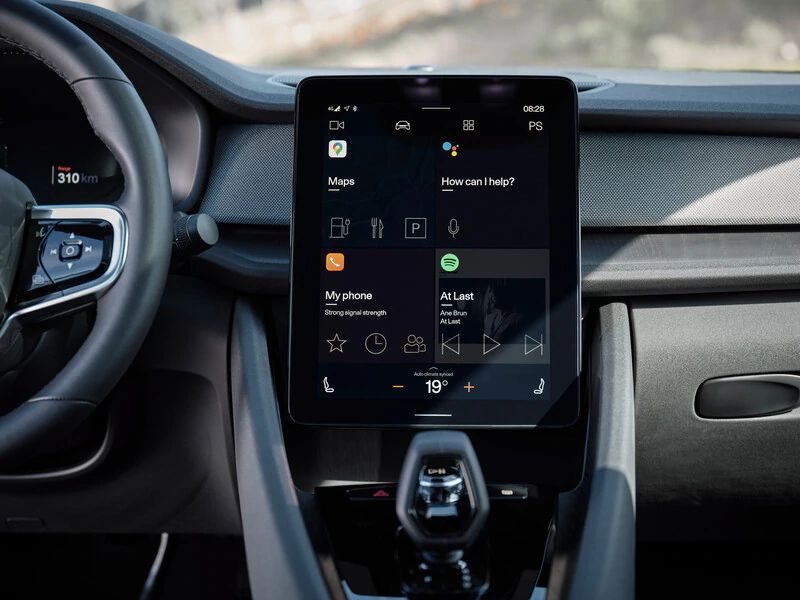
Photo by Polestar
Final Thoughts
Our white test car featured the standard vegan interior and the Performance Pack, so it carried a sticker price of $67,400. Though that’s quite a bit more than the Tesla Model 3, buyers should keep in mind that the Polestar is eligible for a federal tax credit of $7,500 and state tax incentives up to $2,000, which lower its price considerably.
Though Tesla has been dominating the EV market, real competition for its popular Model 3 has been slow to materialize. The Polestar 2 is real competition for the Tesla. It’s about the same size as the Model 3 and it offers similar features. It’s also attractive, comfortable, and fun to drive. And its range is enough for most buyers. Overall, the Polestar 2 is an impressive all-electric luxury sedan — one we would be proud to own.
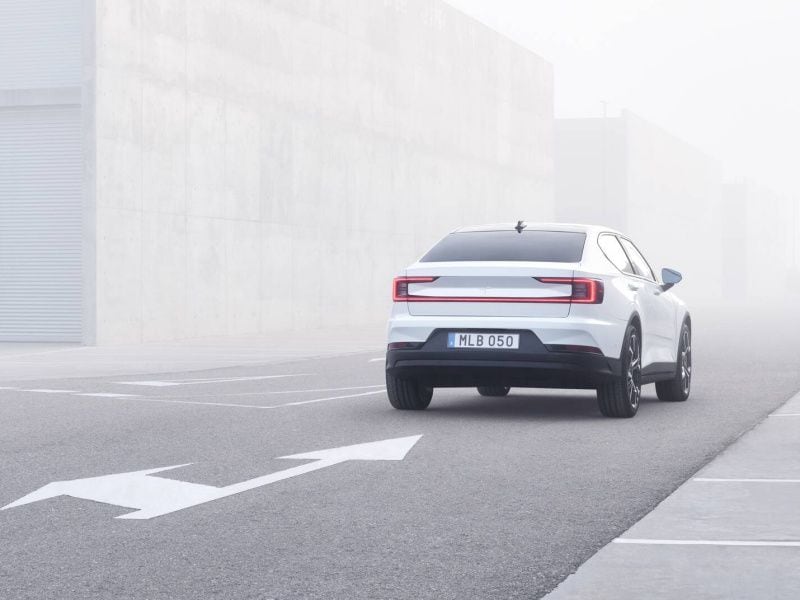
Photo by Polestar